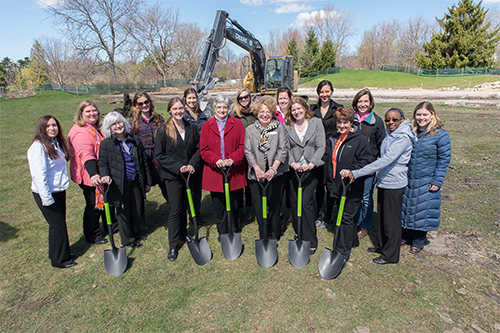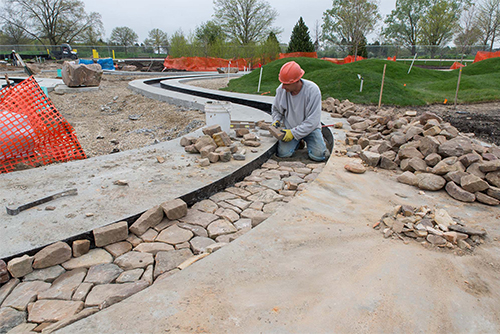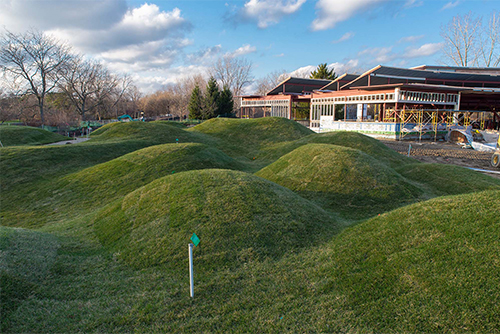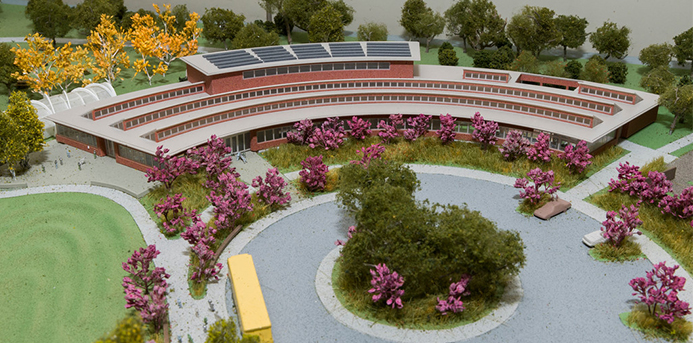The one constant in any garden is its propensity for change. Whether imposed by nature or the gardener, one can always count on its metamorphosis.
This September, Chicago Botanic Garden will unveil the keystone that is the culmination of many years of planning. From the very young to the young at heart, visitors to the Garden’s Regenstein Learning Campus will be immersed in experiential, hands-on learning opportunities that facilitate the Garden’s mission to promote the beauty and importance of nature through education.
According to Jennifer Schwarz Ballard, vice president of education and community programs at the Garden, this will be the first time the education department will have a permanent home at the Garden. Prior to the plan’s inception, the department was spread across three different buildings.
“It consolidates all of our education departments and all of our education staff,” Schwarz Ballard says. “It will allow for increased collaboration and program development.”
In 2009, the Garden established Keep Growing, a 10-year strategic plan that outlined a course of action to address the need for expansion that was in keeping with its mission. A seven-acre parcel would encompass not only the Regenstein Center but also several other learning venues.
Completed in 2011, the Robert R. McCormick Foundation Plaza and entry drive provide a seamless, circular connection between all of the elements of the construction plan. By June the following year, the Grunsfeld Children’s Growing Garden was opened to the public. Raised beds positioned perfectly for children offer opportunities to learn about gardening. By September, the Kleinman Family Cove was completed. The area highlights the importance of fresh water conservation. Hands-on experiences like the protected wading area offer visitors an opportunity to get up close and personal with aquatic plants and animals.

A Grand Plan Realized
Momentum is building as the campus’ hub, the Education Center and Learning Campus Garden, nears completion. The 25,000-square-foot building will house 10 classrooms, with two dedicated to the very young.
“We never had classrooms designed specifically for young children, but we did offer a few early childhood programs like Camp CBG and Little Diggers,” Schwarz Ballard says. “We weren’t really able to expand and serve that audience to the best of our abilities because we didn’t have the appropriate space.”
The Garden’s first nature-based pre-K program will launch this September. With the new dedicated space, the Garden hopes to alleviate, if not diminish, the waiting list that grows each year as parents wait to enroll their children in the highly regarded early childhood programs. Nature play-based programming enforces the importance of interacting with nature through multi-sensory experiences. As children become more technologically “connected” from a very young age, the connection to nature slips further into the background. Through these special programs, the Garden hopes to thwart that trend and introduce children and adults to the joy and solace that can be found in nature.
“It’s unstructured play for individuals of any age,” Schwarz Ballard says. “We want to encourage people to get outside, be active, be creative and engage with nature in however way they really want to.”
Schwarz Ballard recalled being approached by one mom seeking to add her six-month-old baby to the wait list.
“It really speaks to the interest and need for early childhood education,” she says.
The center will also include a teaching kitchen for in-depth cooking and nutrition classes. In years past, classes were held in the demonstration garden in the fruit and vegetable island. With no access to a stove or oven, classes were limited in scope.
“We could make salsa,” says Schwarz Ballard.
Due to the popularity of the Butterflies and Blooms exhibit, it’s been permanently relocated to the learning campus. Schwarz Ballard stresses the importance of explaining the pollinator story by incorporating a bee exhibit complete with an active hive inside the education center.

The Gift of Education
As longtime supporters of education programs at the Chicago Botanic Garden, the Regenstein Foundation made a generous donation that spearheaded the $26 million learning campus. Their involvement with the Garden began with the renovation of the Regenstein Fruit and Vegetable Garden in 1997, equipping the location to serve as not only a demonstration garden, but one that provided space for education and community programs. Their support has remained steadfast.
“Their dedication to the Garden has just been so generous,” Schwarz Ballard says. “We now have a broad and diverse portfolio of education programs and it made sense from their perspective to really support that growth in our programs.”
The Regenstein family’s dedication to higher learning has helped make the Garden a regional and national academic powerhouse. Through a mixture of early childhood classes, adult education and certificate courses, as well as Ph.D. programs offered through university partnerships, the Garden is building on its mission to grow awareness and foster a love and appreciation for the natural world.

A Grand Affair
The Regenstein Learning Campus will celebrate its grand opening the weekend of Sept. 10-11. The public is invited to sample a variety of demonstration classes and enjoy the entertainment. Activities will run from 10 a.m. to 4 p.m. both days and will include live music and a members’ lounge.
“This is a chance for the Garden to share with local and national audiences the quality, breadth and depth of all of the community education programs at the Garden and in the region,” says Schwarz Ballard. “We hope everyone will find something they like.”
The Garden will also hold a seven-month, multi-part lecture series at locations in Chicago and on the North Shore featuring nationally renowned thought leaders on topics including food, wellness, nature and its benefits, and STEM (Science, Technology, Engineering and Math) learning.
More from Make It Better:

